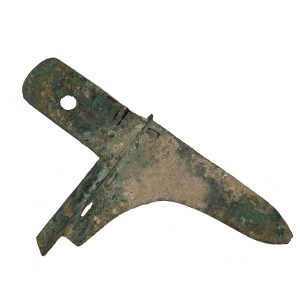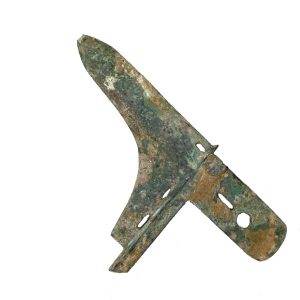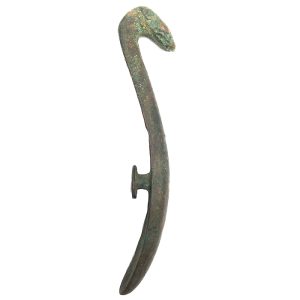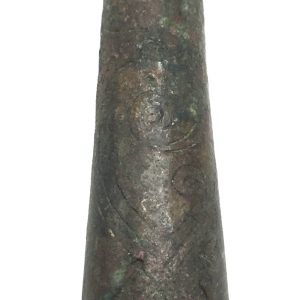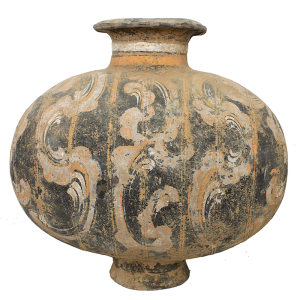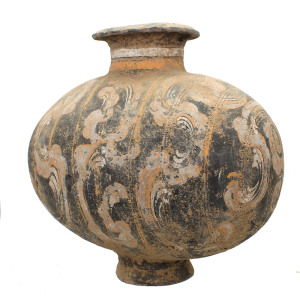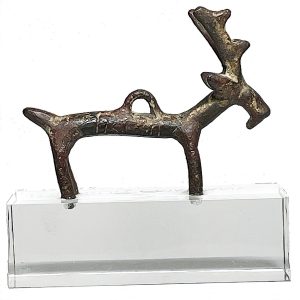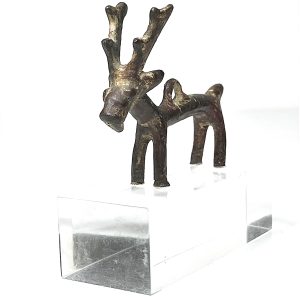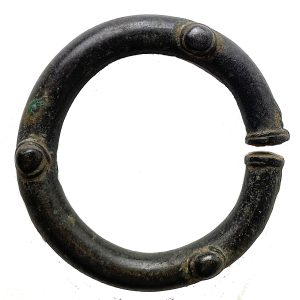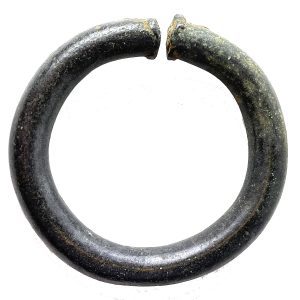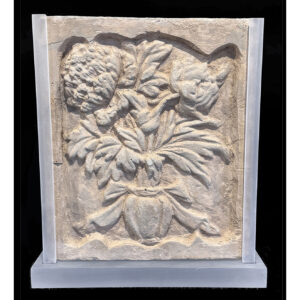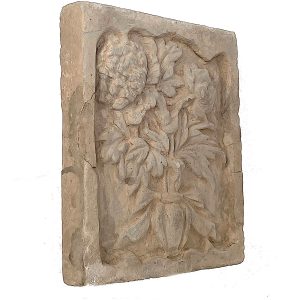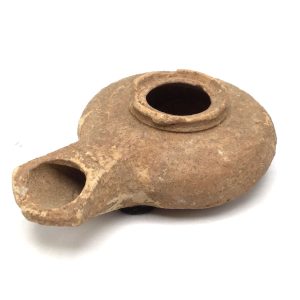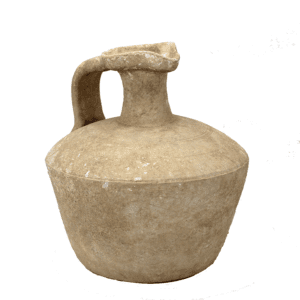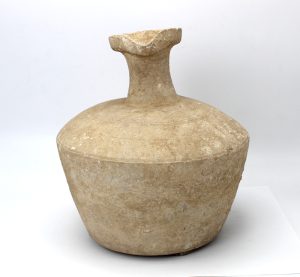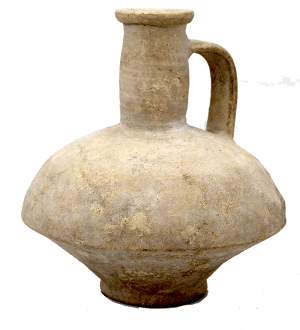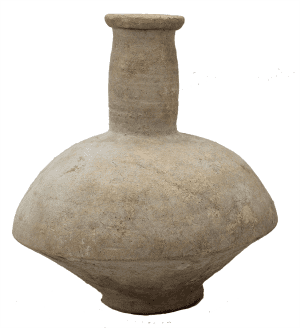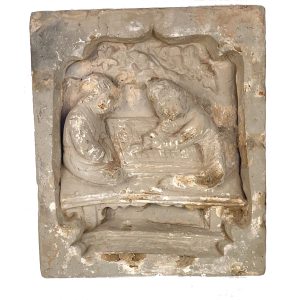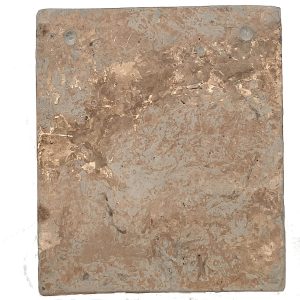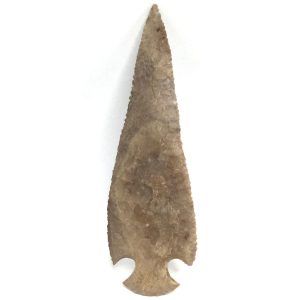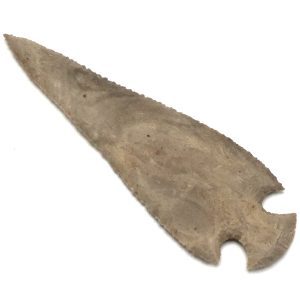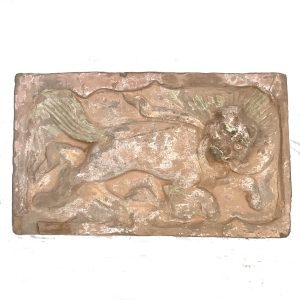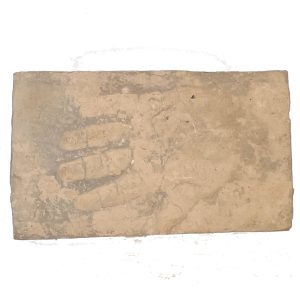Showing 13–24 of 25 results
-
Sale!


$395.00 Original price was: $395.00.$325.00Current price is: $325.00.
H: 4.375 ” W: 7.5 ” D: .24 ” | FREE SHIPPING WITHIN CONTINENTAL U.S.
Han dynasty dagger-axes (ge) like this were ancient military weapons.The dagger-shaped blade was mounted to a pole or shaft and secured using a shank and the holes on the two sections of its body. Their use ended with the advent of chariots and tightly packed military formations. He piece comes with a uniquely fashioned box.
-
Sale!


$485.00 Original price was: $485.00.$350.00Current price is: $350.00.
H: 4.1″ W: 1 ” D:.625 ” | FREE SHIPPING WITHIN CONTINENTAL U.S.!
In the Han, belt hooks became a symbol of wealth, high status and power hung vertically from belt holes used in life and buried with the deceased for his journey to the afterlife . Ornamented with incised decoration this beautiful piece is dragon shaped with beautiful verdigris deposits.
-
Sale!


$2,150.00 Original price was: $2,150.00.$1,785.00Current price is: $1,785.00.
H: 11.75” W: 12.25” CALL 213-568-3030 OR EMAIL [email protected] FOR SHIPPING.
Families placed cocoon jars with auspicious designs containing magical mixtures of mulberry leaves in tombs for departed’s souls to drink to transform in afterlife.
-
Sale!


$450.00 Original price was: $450.00.$350.00Current price is: $350.00.
H: 3″ W: 3.125″ D: 1.25″ | FREE SHIPPING WITHIN CONTINENTAL U.S.
Luristan nomads made sophisticated bronzes prized in the ancient world for their designs and fine craftsmanship. This Iron Age finely cast curved long horned goat is set on a lucite base.
-
Sale!


$650.00 Original price was: $650.00.$495.00Current price is: $495.00.
D: 5” Thickness: 2.5” | FREE SHIPPING WITHIN CONTINENTAL U.S.
Rare bronze/copper alloy ring-shaped Sukhothai bangle bracelet with 3 raised knobs and decorative ends made for person of importance and stature. Fine patina.
-


$995.00
H: 11” W: 9.5” D: 1.65” | FREE SHIPPING
This earthenware brick tile bordered with a deep scalloped frame depicts a vase with a bouquet of propitious flowers: a chrysanthemum and a peony wrapped with an elegant ribbon. Tiles like this were made to decorate the large numbers of buildings created during the prosperous Song dynasty and to adorn tombs. This elegant brick is in good condition for its age with expected chips and cracks, some restoration of background and a re-glued frame break on each side. It has earth adherents from its burial in a tomb.
-


$155.00
Early Christianity oil lamps were also seen as a symbol of light and a manifestations of the presence of the divine.
-
Sale!


$775.00 Original price was: $775.00.$650.00Current price is: $650.00.
H: 4.5” W: 3” D: 2.75” | SOLD
This Roman ceramic flagon is a uniquely shaped vessel used to store and pour potable liquids. A crème slip carinated jug with a high profile and a trefoil pouring spout, it has a strap handle attached from the carinated edge to just below the rim for easy handling. Roman coarse wars like this were use for liquids and to make offerings to household deities.
-
Sale!


$625.00 Original price was: $625.00.$495.00Current price is: $495.00.
H: 8.5” Dia: 5.5” | SOLD
The shape of this elegant carinated ancient earthenware pouring vessel used to hold and dispense potable liquids: water, wine and other drinks. They were used to hydrate everyone including laborers, field workers, ship-rowers, army personnel and people in their homes and were placed wherever they were needed.
-
Sale!


$495.00 Original price was: $495.00.$395.00Current price is: $395.00.
H: 11” W: 9.5” D: 2” | SOLD
As part of the The Song dynasty cultural expansion, government and public buildings and tombs were built with interior walls decorated with earthenware unglazed mold-made brick tiles. This fanciful vibrant tile with a scalloped frame portrays two people playing a board game called wéiqí which originated in China over 2500 years ago. It is the world’s oldest and most complex board game still played.
-


$495.00
Ancient spearpoints with this triangular blade called triangular lanceolate projectile spear point were found under multiple feet of sediment about 40 miles from Austin, Texas are revising ancient American history as they are believed to be the oldest weapons ever found in North America. Considerably older than those made by the Paleoamerican Clovis culture, formerly…
-
Sale!


$485.00 Original price was: $485.00.$395.00Current price is: $395.00.
The Song dynasty (960–1279) is considered the most culturally brilliant era in later imperial Chinese history. A massive expansion during this dynasty produced government, public and religious buildings and tombs with walls decorated with earthenware unglazed mold-made brick tiles. Some were purely decorative and others were wishes for happiness and comfort in the deceased’s afterlife…
End of content
End of content

